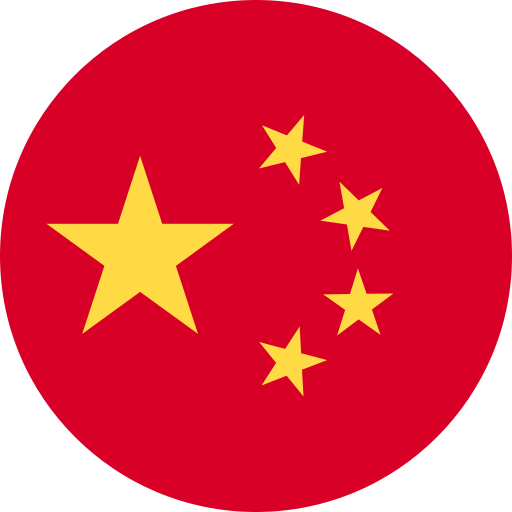Key Takeaways
- Mandarin Dominance: Mandarin is the most widely spoken form of Chinese, serving as the official language in China and Taiwan, and is essential for education and media.
- Tonal Complexity: Mandarin uses four primary tones to convey meaning, while dialects like Cantonese feature six to nine tones, making them more challenging for learners.
- Diverse Dialects: Other forms of Chinese, such as Cantonese, Wu, and Min, showcase unique phonetic systems and cultural expressions that enrich the overall linguistic landscape.
- Cultural Nuances: Each dialect reflects its own regional culture and history; understanding these differences enhances communication with native speakers.
- Vocabulary Variations: While many words are shared across dialects due to common roots, their usage can differ significantly based on regional preferences.
- Engagement Opportunities: Learning about various Chinese forms fosters deeper connections with local cultures and communities during language learning or travel experiences.
Ever wondered why Mandarin is the most spoken form of Chinese while other dialects seem to fade into the background? Understanding the differences between Mandarin and other forms of Chinese isn’t just for language enthusiasts; it can unlock a world of cultural insights and enhance your communication skills.
Overview of Chinese Language Forms
Chinese encompasses several language forms, with Mandarin being the most prominent. Mandarin serves as the official language in China and Taiwan, holding significant importance in education and media. It features four main tones that can change a word’s meaning entirely.
Other dialects, such as Cantonese, Wu, and Min, add diversity to the Chinese language landscape. Each dialect has unique characteristics and tonal systems. For instance:
- Cantonese: Predominantly spoken in Hong Kong and Guangdong province, it includes six to nine tones depending on regional variations.
- Wu: This dialect is mainly spoken in Shanghai and surrounding areas; it offers distinct phonetic sounds compared to Mandarin.
- Min: Known for its various sub-dialects like Hokkien and Teochew, Min poses challenges for mutual intelligibility among speakers.
Understanding these differences enhances your appreciation of regional cultures within China. Recognizing various Chinese forms not only aids communication but also fosters deeper connections with native speakers. Each dialect carries its own history and cultural nuances worth exploring.
Engaging with these diverse linguistic elements enriches your interactions—whether you’re learning a new language or seeking insights into China’s vast cultural tapestry.
Key Features of Mandarin
Mandarin, as the most widely spoken form of Chinese, boasts distinct features that set it apart from other dialects. Understanding these key characteristics enhances your grasp of the language and its cultural context.
Phonetics and Pronunciation
Mandarin features a relatively simple phonetic system compared to other Chinese dialects. It comprises four primary tones: high level, rising, falling-rising, and falling. Each tone changes the meaning of a word entirely; for instance, ”ma” can mean mother or horse depending on its tone. In contrast to Cantonese with its six to nine tones or Wu with its unique phonetic sounds, Mandarin’s tonal structure is more straightforward for learners. Additionally, Mandarin employs pinyin as a romanization system that aids in pronunciation by using Latin letters.
Vocabulary and Usage
Mandarin vocabulary differs significantly from other forms like Cantonese or Min. While many words are shared across dialects due to their common roots, usage can vary greatly based on regional preferences. For example, certain phrases in Mandarin may not have direct equivalents in Cantonese or might be used differently in various contexts. Furthermore, Mandarin relies heavily on modern expressions often influenced by technology and social media trends—making it dynamic and ever-evolving. This adaptability allows you to engage effectively with native speakers while navigating diverse conversational scenarios across different regions of China.
By appreciating these key features of Mandarin—its phonetics and vocabulary—you enhance not only your language skills but also your understanding of China’s rich cultural tapestry.
Comparison with Cantonese
Understanding the differences between Mandarin and Cantonese reveals significant aspects of both dialects. These distinctions shape communication styles and cultural expressions within Chinese-speaking communities.
Phonetic Differences
Cantonese features a much more complex phonetic system than Mandarin. It includes six to nine tones, depending on the regional variation, whereas Mandarin uses only four primary tones. This tonal richness allows for a wider range of meaning in Cantonese words but can pose challenges for learners unfamiliar with such nuances. For instance, the same syllable can convey entirely different meanings based on its tone in Cantonese, making pronunciation critical for effective communication.
Mandarin’s simpler tonal structure makes it more accessible for beginners. However, this does not diminish its depth or expressiveness; instead, it emphasizes clarity in everyday conversations. While shared vocabulary exists across both dialects, context often dictates usage and understanding.
Cultural Context
Cultural contexts surrounding Mandarin and Cantonese further illuminate their differences. Mandarin serves as the official language of China and Taiwan, promoting uniformity in education and media across vast regions. In contrast, Cantonese thrives primarily in Guangdong province and among overseas Chinese communities, particularly in Hong Kong.
This geographical distribution influences idiomatic expressions and cultural references unique to each dialect. When you engage with speakers of either form, understanding these cultural nuances enriches your interactions significantly.
Incorporating elements from each dialect enhances appreciation of China’s diverse heritage while fostering connections with native speakers—whether you’re learning the language or simply exploring its rich tapestry through conversation.
Comparison with Wu Chinese
Wu Chinese presents distinct characteristics compared to Mandarin, highlighting the rich diversity within the Chinese language family. Understanding these differences aids in appreciating the cultural nuances and communication styles of each dialect.
Dialectical Variations
Wu Chinese includes several sub-dialects such as Shanghainese and Suzhounese, which exhibit unique phonetic sounds and tonal patterns. While Mandarin has four primary tones, Wu features a more intricate tonal system that can include up to eight tones. This complexity results in varied pronunciation, making it challenging for Mandarin speakers to understand Wu without prior exposure. Additionally, vocabulary differences exist; some words common in Mandarin may not be recognizable to Wu speakers.
Geographic Distribution
Geographically, Wu is predominantly spoken in East China, particularly in cities like Shanghai, Hangzhou, and Suzhou. In contrast, Mandarin serves as the official language across all regions of China. The concentration of Wu speakers creates localized cultural expressions that differ significantly from those found in Mandarin-speaking areas. While both dialects share a common written script due to Standard Chinese’s influence on education and media, spoken forms reveal a deeper linguistic diversity shaped by regional identities.
Understanding these distinctions between Mandarin and Wu enhances your appreciation of China’s linguistic landscape while fostering better communication with native speakers from different regions.
Comparison with Min Chinese
Min Chinese, also known as Hokkien or Fujianese, represents a significant dialect group within the broader Chinese language family. Understanding its unique features compared to Mandarin enhances your grasp of regional linguistic diversity.
Unique Linguistic Traits
Min Chinese consists of multiple sub-dialects, such as Xiamen and Quanzhou, each with distinct phonetic characteristics. While Mandarin uses four main tones to convey meaning, Min can employ up to eight tones. This complexity leads to pronunciation challenges for learners unfamiliar with tonal languages. Moreover, Min has preserved many archaic vocabulary terms that differ from modern Mandarin usage. For instance, certain words in Min may evoke historical references or local customs that aren’t present in Mandarin.
Influence on Regional Culture
Min Chinese plays a crucial role in shaping cultural identity among its speakers. The dialect acts as a vessel for local traditions and customs passed down through generations. In regions like Fujian and Taiwan, festivals and community gatherings often emphasize the use of Min dialects, fostering connections among speakers. Unlike Mandarin’s standardization across China’s vast territories, Min retains localized expressions tied closely to specific cultural practices. Engaging with this dialect opens a window into rich regional narratives that enhance your understanding of China’s diverse heritage.
By recognizing these distinctions between Min Chinese and Mandarin, you gain insight not just into language but also into the intricate tapestry of cultures within China.
Conclusion
Understanding the differences between Mandarin and other Chinese dialects is essential for anyone looking to navigate China’s linguistic landscape. Each dialect offers a unique glimpse into regional cultures and communication styles that can enrich your language learning experience.
By engaging with these distinctions, you not only enhance your communication skills but also deepen your appreciation for the diverse heritage of China. Whether you’re exploring Cantonese’s complexity or diving into the subtleties of Wu and Min, you’ll find that each form adds depth to your understanding of this multifaceted language family. Embracing these variations opens doors to meaningful connections with native speakers and a richer cultural journey.
Frequently Asked Questions
What is Mandarin, and why is it important?
Mandarin is the most widely spoken form of Chinese and serves as the official language in China and Taiwan. It plays a crucial role in education, media, and communication. Understanding Mandarin helps learners connect with Chinese culture, enhances communication skills, and facilitates interactions with native speakers.
How does Mandarin differ from other Chinese dialects?
Mandarin has a simpler phonetic system with four primary tones, making it more accessible for beginners. In contrast, other dialects like Cantonese have complex tonal systems with up to nine tones. Each dialect also has unique vocabulary and regional expressions that enrich cultural understanding.
What are some key features of Cantonese?
Cantonese is known for its intricate tonal structure, featuring six to nine distinct tones that can change word meanings dramatically. This complexity offers rich expression but can be challenging for learners. Cantonese thrives in regions like Guangdong province and Hong Kong.
Can you explain Wu Chinese?
Wu Chinese includes several sub-dialects such as Shanghainese and Suzhounese, primarily spoken in East China. Wu has unique phonetic sounds and tonal patterns that differ significantly from Mandarin. Understanding Wu enhances appreciation of local cultures while improving communication with native speakers.
What about Min Chinese?
Min Chinese, also known as Hokkien or Fujianese, consists of multiple sub-dialects like Xiamen and Quanzhou. It often employs complex tonal systems—up to eight tones—and preserves many archaic terms not found in modern Mandarin. Engaging with Min allows insights into local customs and historical narratives.
Why should I learn about different Chinese dialects?
Learning about various Chinese dialects enriches your understanding of China’s cultural diversity. It fosters better communication skills by helping you appreciate regional differences in language use while deepening connections with native speakers across different areas of China.







